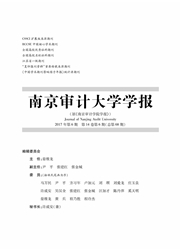

 中文摘要:
中文摘要:
基于中国17个重要产粮省份1992—2014年的面板数据,实证分析各因素对粮食产量的影响,研究发现:播种面积对粮食产量的影响最大;现阶段的劳动力转移并没有影响粮食产量;技术进步对提高粮食产量的影响最明显也最有潜力;受灾面积明显不利于粮食生产;财政支农支出可以提高粮食产量,但这一作用相对较弱。在小麦和水稻的对比研究中上述结论仍然成立,但这两个主粮品种的回归结果存在明显的差异,即小麦产量对土地面积、化肥使用、气象灾害、财政支农支出更敏感,而水稻产量对劳动力投入更敏感。
 英文摘要:
英文摘要:
Based on the panel data of 17 important grain-production provinces in China from 1992 to 2014,the paper makes an empirical analysis of the influence of various factors on the grain yield. The research finds that: a) Seeding area is the deepest influence factor on grain production; b) Labor transfer has not affected grain yield at the present stage; c) Technical progress has the most obvious and most potential impact on the increase of grain production; d) The affected area is obviously not conducive to grain production,and e) Fiscal expenditures for supporting agriculture can improve grain production,but the effect is relatively weak. By comparative study of wheat and rice,the above conclusions still stand up. But there exist significant differences in the regression results of the two staple varieties,namely,wheat yield is more sensitive to the farmland area,the use of fertilizer,meteorological disasters,and fiscal expenditure for agriculture,while the rice yield is more sensitive to labor input.
 同期刊论文项目
同期刊论文项目
 同项目期刊论文
同项目期刊论文
 期刊信息
期刊信息
